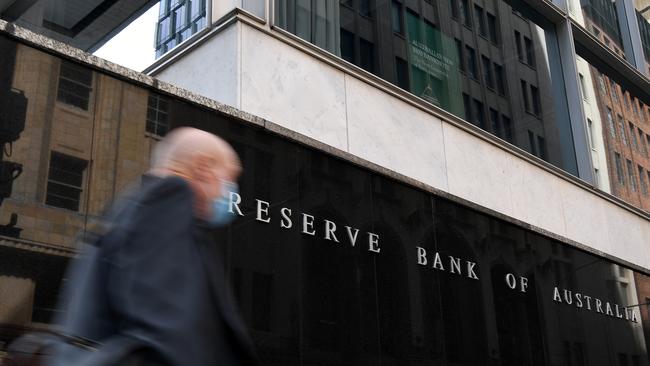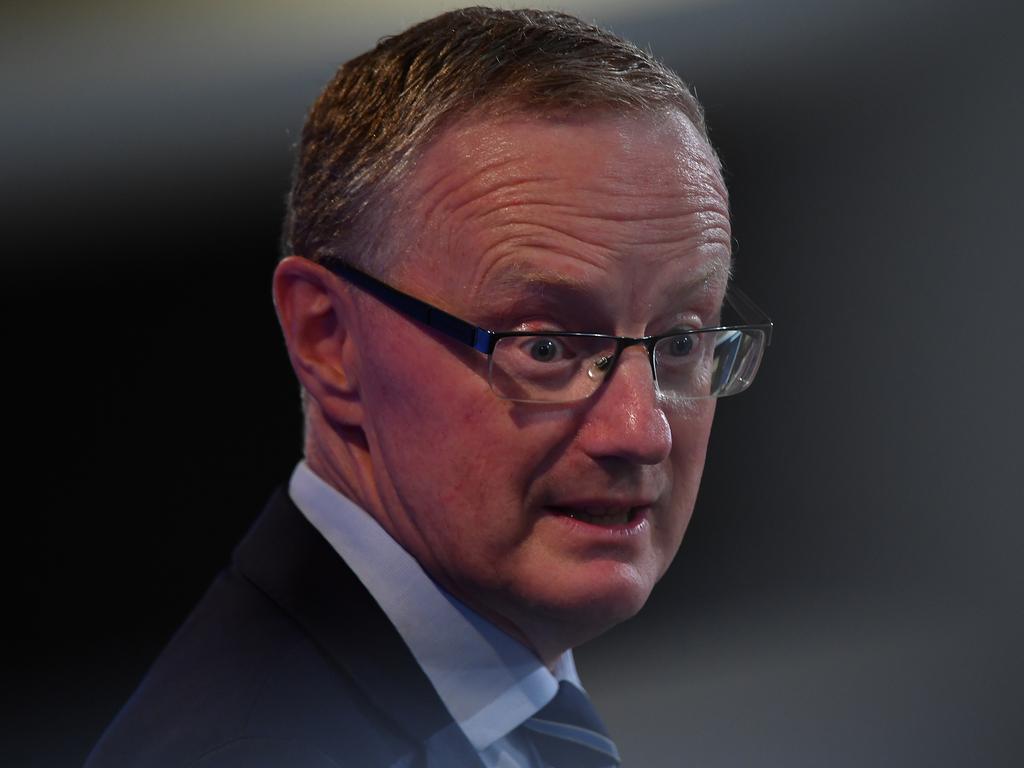RBA pledges ‘whatever it takes’
The Reserve Bank has vowed to do whatever it takes in order to keep official cash rates low, even as investors dump bonds amid inflation fears.

The Reserve Bank has vowed to do whatever it takes in order to keep official cash rates low, even as investors dump bonds amid fears of inflation setting in to the global economy.
The central banks said it is prepared to undertake another round of bond buying – which economists put at another $100bn – after its existing $200bn program is completed in coming months.
However money market investors continued to challenge the RBA’s resolve to keep the cash rate at ultra-low levels as the economy recovers, sending bond yields higher after the central bank maintained its view that it did not expect to lift the cash rate until 2024.
In a statement following the monthly board decision on the bank’s monetary policy direction, RBA governor Philip Lowe said he did not expect rates to rise from the 0.1 per cent setting within three years, despite acknowledging that the economy was recovering faster-than-expected.
“In Australia, the economic recovery is well under way and has been stronger than was earlier expected,” Dr Lowe said, “The recovery is expected to continue … GDP is expected to return to its end-2019 level by the middle of this year.
Dr Lowe also said the bank would maintain its three-year government bond yield target of 0.1 per cent amid volatility in the longer-term bond market and said the bank was willing to “make further adjustments” to its bond purchasing programs to “assist with the smooth functioning of the market.”
Despite a commitment to more flexibility in keeping yields low, the benchmark 10-year Australian Government bond yield roared back to life on Tuesday after the RBA’s rates announcement, lifting as much as eight basis points before trading at 1.722 per cent, up around six points late in the session.
At the same time local shares decidedly reversed a strong early gain as the S&P/ASX 200 index closed down 0.4 per cent at 6762 points.
KPMG chief economist Brendan Rynne told The Australian that the bond yield spike and market slide are correlated: there is a market expectation that the RBA will have to lift the cash rate before 2024.
“Clearly there is a difference of expectations between what the market is believing is going to happen in the short to medium term around interest rates compared to the rhetoric that is being provided by the Reserve Bank,” Dr Rynne said.
“That’s not to say the market’s anticipating the cash rate to go up immediately, but whether or not the RBA can hold on at historically low levels for the next three years remains to be seen.”
Dr Rynne said KPMG forecasted an increase in the cash rate sometime next year, despite having a less bullish estimate on when the Australian economy will recover from COVID-19 than the RBA.
“If the economy continues to perform strongly, and our expectation that from a GDP perspective Australia’s GDP will return to the same level it was pre pandemic in the second half of this year.
“From an economic growth perspective, it is probably going to be in towards the second half of 2022 when you are going to start needing to look at raising the cash rate if the economy is performing strongly.”
Dr Lowe also on Tuesday flagged its quantitative easing bond buying could continue beyond September. This has seen the bank purchase up to $200bn of state and federal government bonds under the current program which was spread over two phases.
“The bank is prepared to do more if that is necessary,” Dr Lowe said.
Analysts at Citi were tipping another $100bn program will be outlined in coming months by the RBA to quell bond investors.
Citi analysts said the RBA’s central strategy involved keeping the Australian dollar subdued and anticipated further yield volatility would encourage it to expand its large-scale asset purchases to keep borrowing costs low.
“Its commitment to a more flexible … program only reiterates the bank’s aversion to financial conditions tightening, and putting more upward pressure on the currency, which it noted remains “in the upper end of the range of recent years,” they said.
“We expect the Bank to add another $100bn to its program in October 2020; the risk to our view is that it could be tapered — but not removed — if the economy continues to outperform.”
But while reaffirming its willingness to be flexible in its bond buying to support its 3-year bond target and fight market stress and premature tightening of financial conditions – caused by investor optimism over the Covid vaccine rollout – following its upsized bond purchases last Thursday and Monday – the central bank stopped short of indicating that its $4bn of bond purchases on Monday represented a further increase in its pace of bond buying from the current target of $5bn per week.
Bond purchases under its bond buying program were merely “brought forward to assist with the smooth functioning of the market”, Dr Lowe said.
It comes as US Federal Reserve officials, including Governor Jay Powell, recently indicated that the Fed sees the recent jump in US bond yields and steepening of the US yield curve as sign of confidence in the economy, suggesting that the Fed is not about to increase its pace of quantitative easing, even as ECB officials appeared to draw a line in the sand.
AMP Capital’s head of investment strategy and chief economist, Shane Oliver, said that if the economy continues to surprise on the upside “then there is a good chance that the first rate hike will be in 2023.”
“But that is still a long way off and so variable mortgage rates will remain low for now, although we may start to see some upwards drift in 4-year plus fixed mortgage rates consistent with the back up in long term bond yields.”
One factor which could cause the RBA to reconsider is if the property market continues to hot up – as it has been doing lately with a near 18 year high in price gains in February and record monthly housing finance commitments.
“In fact the RBA does seem to be getting a little bit more concerned about this noting that lending standards need to remain sound,” Dr Oliver added.
“The winding down of homebuyer incentives, JobKeeper and bank payment holidays will be watched by the RBA, but if as we expect the impact is marginal and the property market continues to see strong price gains led increasingly by investors, pressure on the RBA and APRA to re-tighten lending standards is likely from later this year and we expect action to do so ahead of the first rate hike. This is likely later this year or through 2022.”
Still, while the RBA’s comments on Tuesday “suggesting that its not too concerned about its ascent … the risk of a further unwanted rise in its value suggests that the RBA will remain under pressure to expand and continue its bond buying program, particularly as its Term Funding Facility comes to an end, he said.






To join the conversation, please log in. Don't have an account? Register
Join the conversation, you are commenting as Logout